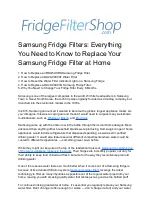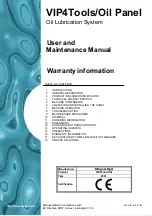
JUDO HEIFI-TOP
9
Installation
4.2
Discharging the
backwashing water
ATTENTION
(see chapter “Safety information and
dangers due to non-compliance”)
For the backwashing water a wastewater
connection (for example a floor drainage) in
accordance with DIN 1986 must be in place.
If there is no wastewater connection an ap-
propriately sized bucket can be used.
4.3
Backwashing process
ATTENTION
(see chapter “Safety information and
dangers due to non-compliance”)
During the backwashing process hot water
is discharged at the wastewater sockets –
careful - risk of scalding!
If retrospectively installed in the heating sys-
tem, the filter should be backwashed every
14 days until the backwashing water is clear.
After this it suffices to backwash the system
at the start and end of each heating period.
For backwashing the handwheel must be
turned to the left up until the limit stop. This
makes the integrated ball valve handle ac-
cessible from the front. By opening the ball
valve the filter is backwashed (see chapter
“Backwashing”).
Caution – risk of scalding!
After approx. 2 to 3 liters of backwashing wa-
ter has been flushed through the ball valve
must be tightly closed again. Turn the hand-
wheel back to the right up to the limit stop.
This places the filter back in the operating
position. The ball valve handle is now at the
back of the filter again.
The heating water circuit must be returned
to operating pressure by topping it up
through the infeed point, unless a filling sta-
tion has been installed. The expansion ves-
sel inlet pressure and the operating pres-
sure must be set before the filter is put into
service. They must be checked and set at
least once a year.
The following points must be observed if a
bucket is used for the backwashing:
–
If the pressure is high water can splash
out of the bucket and the end of the hose
can fall out of the bucket.
Caution – risk
of scalding!
In this case objects near
the filter can be damaged.
–
When the bucket is half full the back-
washing process must be ended. Other-
wise the bucket can overflow. Therefore
the bucket must be adequately dimen-
sioned (see fig. 4).






































